Preceded by Enn-Arno Sillari | ||
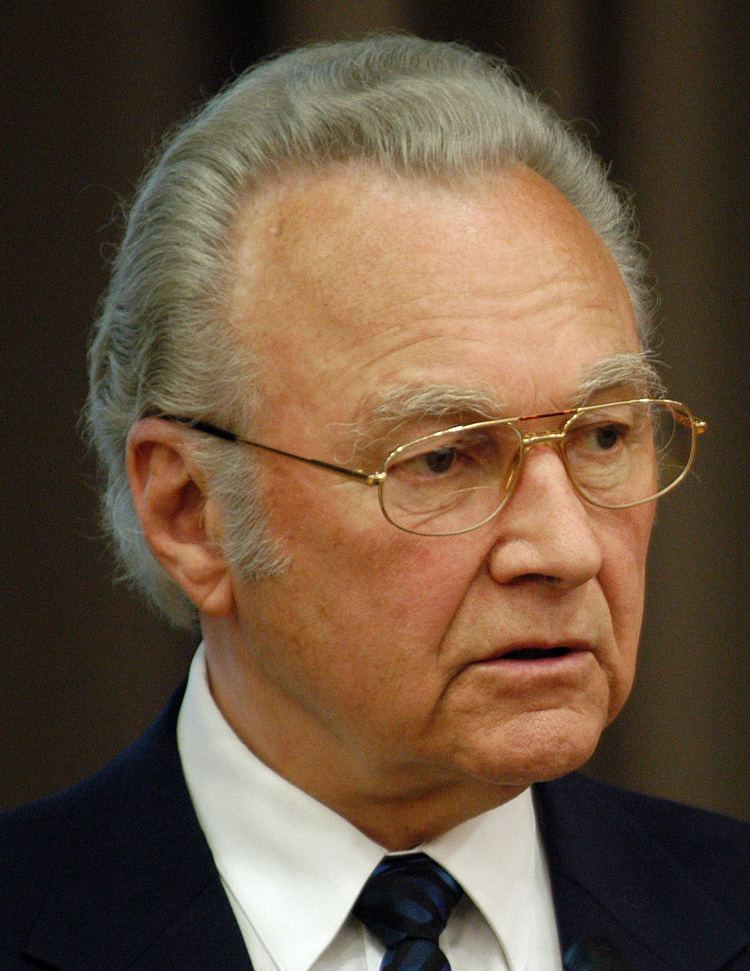 | ||
Prime Minister Mart LaarSiim KallasJuhan PartsAndrus Ansip Presidential term 8 October 2001 – 9 October 2006 Books Cooperation in the Baltic Sea and European Union regions - Estonia's choices Similar | ||
Arnold r tel former president of estonia
Arnold Rüütel ([ˈɑrnold ˈryːtel]) (born 10 May 1928) served as the last Chairman of the Presidium of the Supreme Soviet of the Estonian SSR from April 8, 1983, to March 29, 1990, Chairman of the Supreme Soviet of the Estonian SSR (from May 8, 1990: Supreme Council of the Republic of Estonia) from March 29, 1990, to October 6, 1992, and was the third President of Estonia from October 8, 2001, to October 9, 2006. He was the second President since Estonia regained independence in 1991. Rüütel also served as one of fifteen Deputy Chairmen of the Supreme Soviet of the USSR.
Contents
- Arnold r tel former president of estonia
- During the Soviet Era
- Regaining independence
- Independent Estonia
- Presidential term
- 2006 candidacy
- Personal life
- Awards
- References
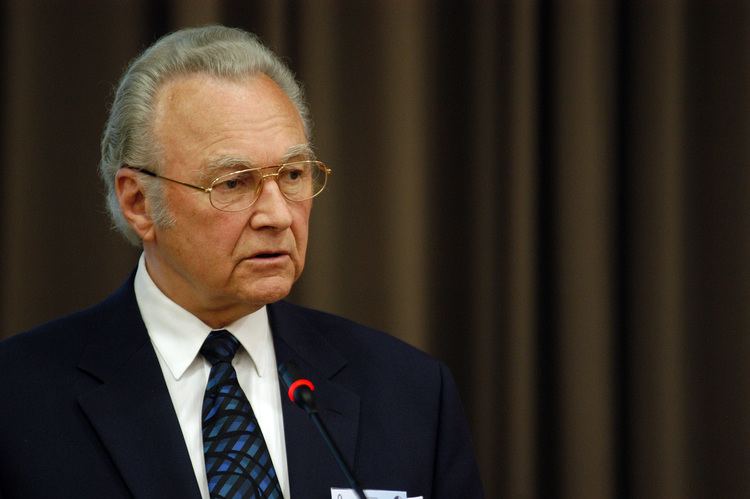
Arnold r tel former president of estonia
During the Soviet Era
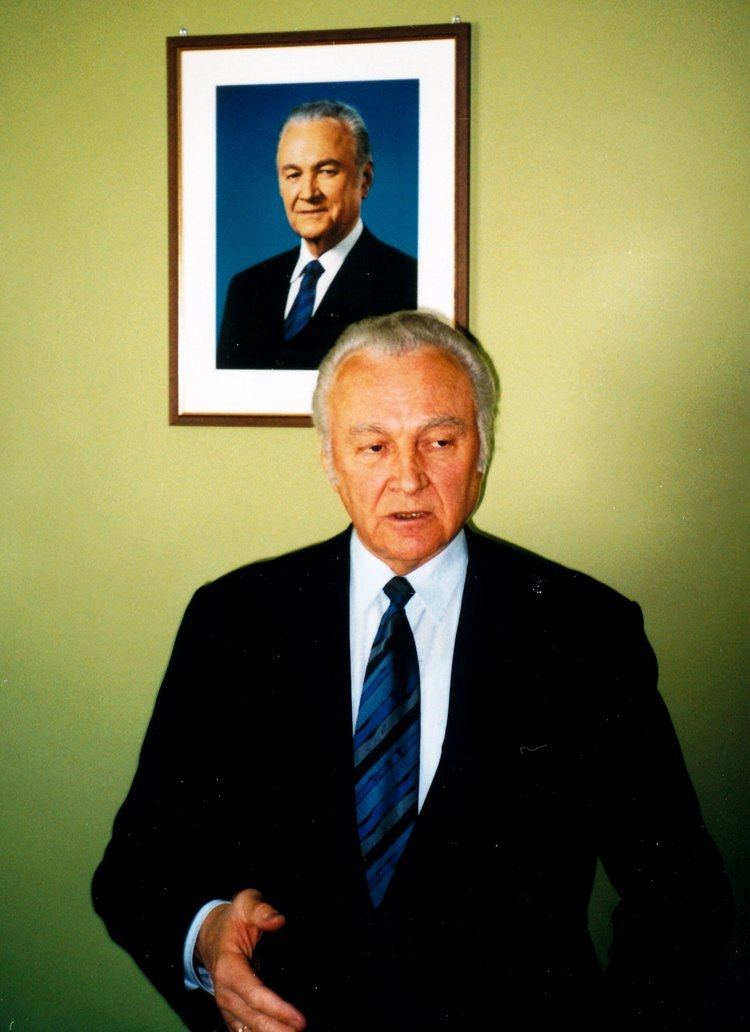
Rüütel was born in Laimjala Parish, on the island of Saaremaa. He graduated from Jäneda Agricultural College in 1949, and worked as a senior agronomist for the Department of Agriculture of Saaremaa (1949–1950) and as a teacher of agriculture at the Tartu School of Mechanization of Agriculture from 1955 to 1957.
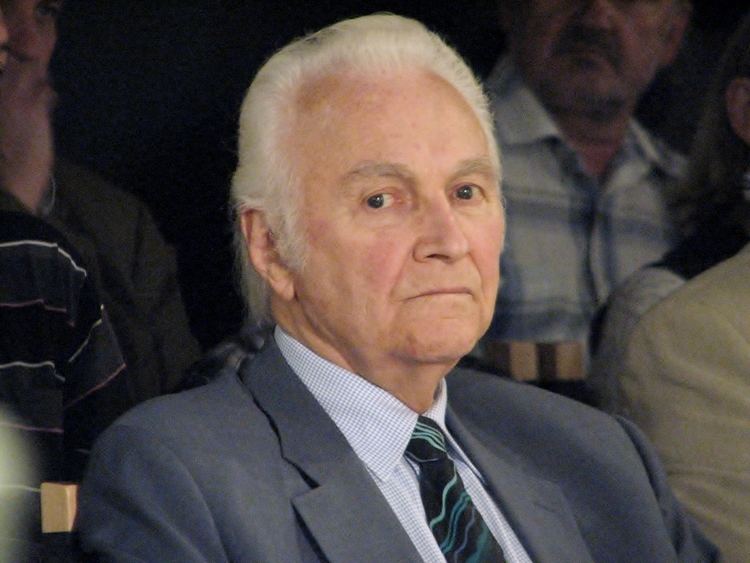
In 1957, he was appointed as head expert in livestock and director of the experimental farm of the Estonian Livestock Breeding and Veterinary Institute, and in 1963 he was appointed as Director of the Tartu Model Sovkhoz, a position he held until 1969. At the same time, he graduated from the Estonian Academy of Agriculture in 1964, obtaining higher education, and gained the qualification of Candidate of Agricultural Sciences in 1972.
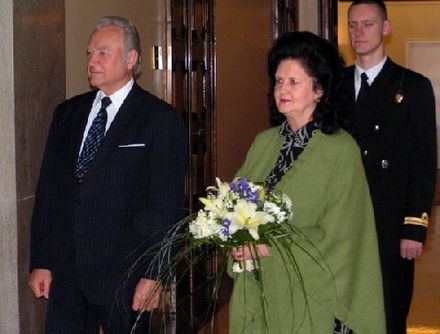
From 1969 to 1977, Arnold Rüütel was Rector of the Estonian Academy of Agriculture. From 1977 onwards, he held high office in the institutions of the Estonian Soviet Socialist Republic. On April 8, 1983, he was appointed as Chairman of the Presidium of the Supreme Council of the Estonian SSR; thus he was also one of the 15 deputy chairmen of the Supreme Soviet of the USSR.
Regaining independence
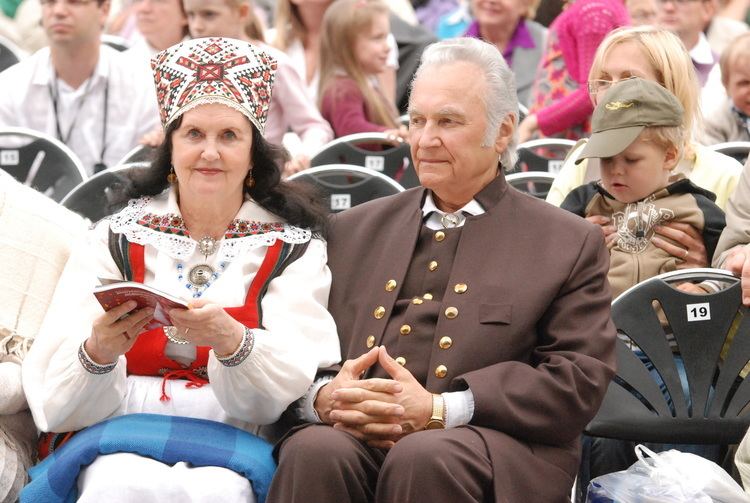
Together with other pro-reform Communists like Vaino Väljas, Rüütel played a major part in the preparation and composition of the Estonian declaration of sovereignty that was adopted by the Supreme Soviet on November 16, 1988.
On March 29, 1990, he was elected as Chairman of the Supreme Soviet of the Republic of Estonia. He served during the confirmation of Estonia's independence on August 20, 1991. Rüütel continued in office until October 6, 1992.
Independent Estonia
Rüütel was also a member of the Constitutional Assembly from 1991 to 1992, which drafted the new Constitution of the Republic of Estonia. He stood as a candidate in the first presidential election in 1992 (supported by some agrarian parties and the Estonian Coalition Party). In the first round, where the people voted, Rüütel came first, receiving 43% of the votes. The second round was held in the Riigikogu, whose members voted for the two leading candidates of the first round; there, Rüütel lost to Lennart Meri.
In 1991, Rüütel took his Doctorate in agriculture. He served as Chairman of the People's Union of Estonia from 1994 to 2000, and was elected as a member of the Estonian Parliament, the Riigikogu, in 1995, where he acted as Vice-Chairman until 1997. He ran for President in the 1996 election (this time an indirect election with no popular vote) and lost to Meri once again.
Presidential term
He was elected President by an electoral college on September 21, 2001, defeating Toomas Savi in the final round by votes of 186 to 155. Rüütel was inaugurated as President of the Republic on October 8, 2001. As Rüütel had been the candidate of the opposition (mostly consisting of Centre Party and People's Union), Savi's loss (in the last round he was supported by both Reform Party, Pro Patria Union and the Moderates) was a great disappointment for the ruling tripartite coalition. Mart Laar's cabinet eventually fell later the same year.
Rüütel announced in his election manifesto that his principal aims would be to reduce the negative effects that Estonia's speedy economic changes had had on a large number of people, and to seek greater solidarity within the society. His most ambitious project was the Ühiskondlik kokkulepe (roughly Societal Deal).
Rüütel's public support for joining the European Union was considered instrumental in convincing people to vote "Yes" in the 2003 Estonian European Union membership referendum.
2006 candidacy
The end of Rüütel's term was overshadowed by several controversies. On the Independence Day military parade on February 24, 2005, Rüütel repeatedly congratulated soldiers on 'Victory day' (Estonian Victory Day is on June 23), which caused speculation about the then 76-year-old president's mental health. In January 2006, Estonian Television reported that Rüütel's underage granddaughters had organized a party in the presidential palace and drunk alcohol. Later that year, the newspaper Eesti Ekspress published archived documents suggesting that Rüütel as a top functionary of the Estonian SSR was involved in the persecution of scientist Johannes Hint (later sentenced to jail in a show trial) by the KGB. Rüütel himself commented that he had tried to defend Hint.
As Rüütel's term was due to end in October 2006, he announced on June 7, 2006, that he would be a candidate for re-election, thus ending speculation as to his candidacy. Rüütel was supported by the People's Union and the Centre Party. However, Rüütel said that he would only stand for election if the vote was decided by the electoral college, which occurs only if the Parliament fails to elect a President with a two-thirds supermajority. Throughout the presidential election campaign, Rüütel was criticised by both his opponents and political scientists for not having participated in the Riigikogu round and not taking part in debates.
In late August, the parliament failed to elect a President. The election of Ene Ergma and Toomas Hendrik Ilves by the parliament was blocked by Rüütel's supporters, who didn't take out ballots. The electoral college met to vote for a president on September 23. The latest opinion polls (September 2006) had suggested that Rüütel's popular support was around 31 per cent (Ilves' support was 51%); Rüütel was more popular amongst the elderly and the Russian-speaking minority. In the electoral college, Rüütel received 162 votes against 174 for Ilves. Rüütel congratulated the winner and offered his assistance. Rüütel's presidency therefore expired at the end of his term, and Ilves took office on October 9, 2006.
Personal life
Arnold Rüütel is married to Ingrid Rüütel (born November 3, 1935), a folklorist and ethnographer. They have two daughters.
